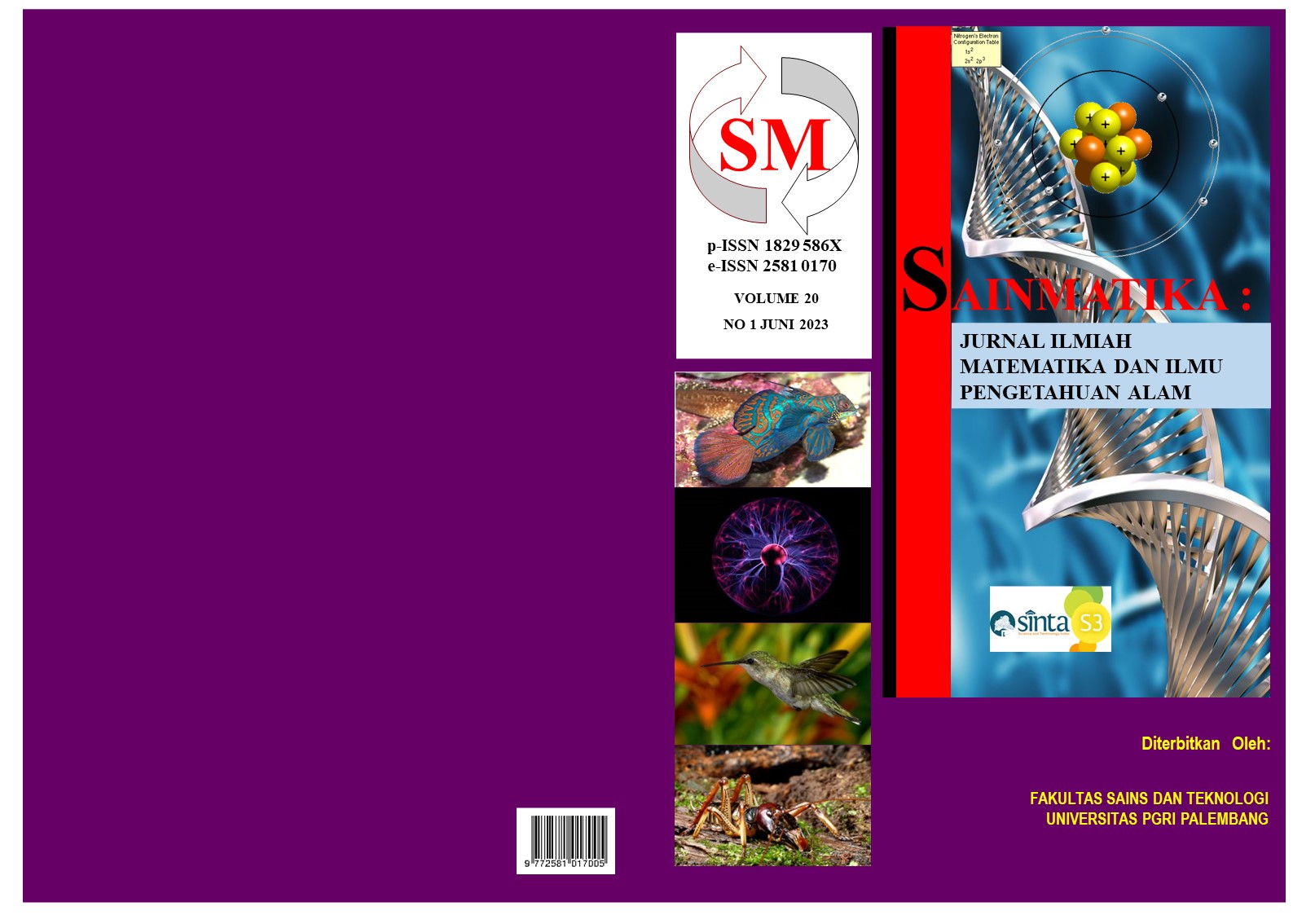Intervention Analysis for Modeling and Forecasting Exchange Rates Rupiah Against Yen
DOI:
https://doi.org/10.31851/sainmatika.v20i1.9209Keywords:
ARIMA, Intervention Analysis, MAPEAbstract
The Rupiah exchange rate against the Yen is one of the most important exchange rates in Indonesia since the agreement between the two countries to conduct investment and trade transactions using local currency. Exchange rate movements tended to strengthen during 2019. In 2020 there was a COVID-19 intervention and there was a significant weakening. An intervention is an event that causes a sharp increase or decrease in time series data. Intervention analysis is an analysis used on the data affected by the intervention by measuring the magnitude of the change in value and the duration of the intervention. Intervention analysis research on data on the rupiah exchange rate against the yen is still very rarely done. This study aims to apply intervention analysis in modeling and forecasting the Rupiah against the Yen exchange rate by considering the impact of the COVID-19 intervention. Research shows that the COVID-19 intervention on the Rupiah exchange rate against the Yen has had a long impact with the best intervention model being ARIMA (4,2,0) with an order of intervention (0,1,0). The level of forecasting accuracy using the model is very good with a MAPE value of 2.69%.
References
[BPS] Badan Pusat Statistik. (2018). Nilai Tukar Valuta Asing di Indonesia 2017. Retrieved February 20, 2022, from https://www.bps.go.id
Bank Indonesia. (2021). Bank Indonesia dan Kementerian Keuangan Jepang Perkuat Kerja Sama Penyelesaian Transaksi dengan Mata Uang Lokal Kedua Negara. Retrieved February 26, 2022, from https://www.bi.go.id/id/publikasi/ruang-media/news-release/Pages/sp_2319121.aspx
Bappenas. (2020). Perkembangan Ekonomi Indonesia dan Dunia untuk Triwulan I 2020. Bappenas RI, 4(1), 1–80.
Box, G. E. P., Jenkins, G. M., Reinsel, G. C., & Ljung, G. M. (2015). Time series analysis : forecasting and control (Fifth). John Wiley & Sons.
Chang, P. C., Wang, Y. W., & Liu, C. H. (2007). The development of a weighted evolving fuzzy neural network for PCB sales forecasting. Expert Systems with Applications, 32(1), 86–96. https://doi.org/10.1016/j.eswa.2005.11.021
Cryer, J. D., & Chan, K.-S. (2008). Time Series Analysis: With Applications to R (Vol. 2). Springer.
Daniel, W. W. (1990). Applied nonparametric statistics (2nd ed.). PWS–Kent Publishing Company.
Etuk, E. H., Onyeka, G. N., & Leesie, L. (2017). Intervention Analysis of Daily Yen/Naira Exchange Rates. 6(1), 41–49.
Hanke, J. E., & Winchern, D. (2014). Business Forecasting (ninth). Pearson Education Limited.
Makridakis, S. G., Wheelwright, S. C., & Hyndman, R. J. (1997). Forecasting : methods and applications (Vol. 3). John Wiley & Sons.
Montgomery, D. C., Jennings, C. L., & Kulahci, M. (2008). Introduction to Time Series Analysis and Forecasting. John Wiley & Sons.
Muhyiddin, M., & Nugroho, H. (2021). A Year of Covid-19: A Long Road to Recovery and Acceleration of Indonesia’s Development. Jurnal Perencanaan Pembangunan: The Indonesian Journal of Development Planning, 5(1), 1–19. https://doi.org/10.36574/jpp.v5i1.181
Nurmasari, I., & Nur’aidawati, S. (2021). The Effects of Inflation, Interest Rates and Exchange Rates on Composite Stock Price Index During the Covid-19 Pandemic. Jurnal Mandiri : Ilmu Pengetahuan, Seni, Dan Teknologi, 5(2), 77–85. https://doi.org/10.33753/mandiri.v5i2.178
Pransuamitra, P. (2020). Rupiah Bangkit Dari Level Terlemah Sepanjang Sejarah vs Yen. Retrieved February 24, 2022, from https://www.cnbcindonesia.com/market/20200326143927-17-147694/rupiah-bangkit-dari-level-terlemah-sepanjang-sejarah-vs-yen
Wei, W. W. S. (2006). Time Series Analysis: Univariate and Multivariate Methods Second Edition. In Pearson Education, Inc.
WHO. (2021). WHO/Europe | Coronavirus disease (COVID-19) outbreak - About the virus. Retrieved May 18, 2022, from https://www.euro.who.int/en/health-topics/health-emergencies/coronavirus-covid-19/novel-coronavirus-2019-ncov
Yunita, T. (2019). Peramalan Jumlah Penggunaan Kuota Internet Menggunakan Metode Autoregressive Integrated Moving Average ( ARIMA ). Journal of Mathematics: Theory and Applications, 1(2), 16–22.
Zukrianto, S. A., Widyanti Rahayu, & Siregar, D. (2021). Peramalan Indeks Saham LQ45 pada Masa Pandemi COVID-19 Menggunakan Analisis Intervensi. Jurnal Statistika Dan Aplikasinya, 5(2), 251–259. https://doi.org/10.21009/jsa.05213

Downloads
Published
Issue
Section
License
Copyright (c) 2023 Sainmatika: Jurnal Ilmiah Matematika dan Ilmu Pengetahuan Alam

This work is licensed under a Creative Commons Attribution-NonCommercial-ShareAlike 4.0 International License.








